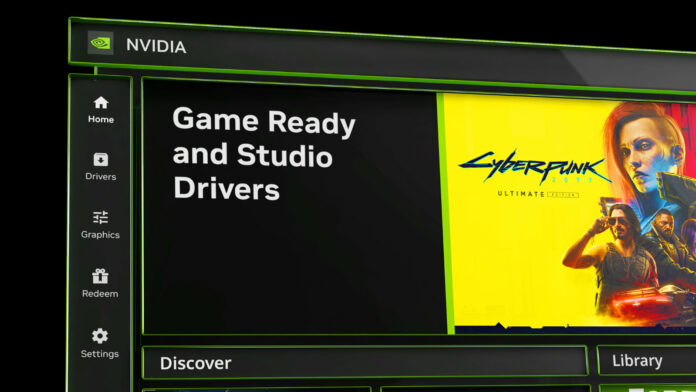Nvidia GeForce Experience held the fort for over ten years, but the brand’s finally putting it out to pasture. The program’s replacement, simply called Nvidia App, aims to be a one-stop shop for all you need. It’s currently in beta, but you can already try it for yourself. Better yet, it doesn’t even require a login like the current software.
After you download it, you’ll immediately notice the sleek new paint job. This is most obvious with the overlay, which now includes Shadowplay gameplay recording. It’s all the same tech we’ve come to know, but it’s capable of 120fps capture rather than just 60fps.
It doesn’t seem like it’s much different from GeForce Now at first glance, but the devil is in the details. Nvidia App splits between five tabs that send you to Home, Drivers, Graphics, Redeem, and Settings.
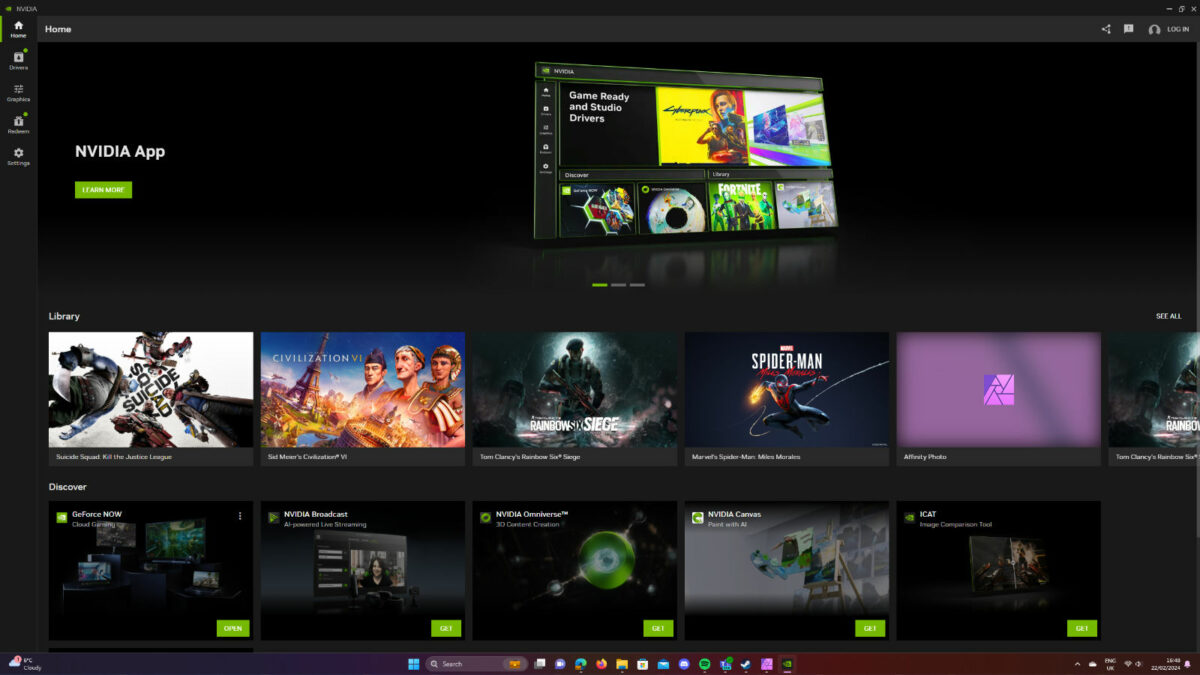
Home displays any games Nvidia detects in your installed library. You can boot them directly from here or change their settings. The latter choice zips you over to the Graphics tab, which we’ll touch on shortly.
It also features a Discover section that highlights all the manufacturer’s other apps. It’s a pretty convenient way to download or open GeForce Now cloud gaming, Nvidia Broadcast streaming software, Omniverse, Canvas, ICAT, and FrameView. These remain distinct apps that open in another window. The only app missing is RTX Voice for GTX graphics card owners, but that’s part and parcel with Broadcast anyway.
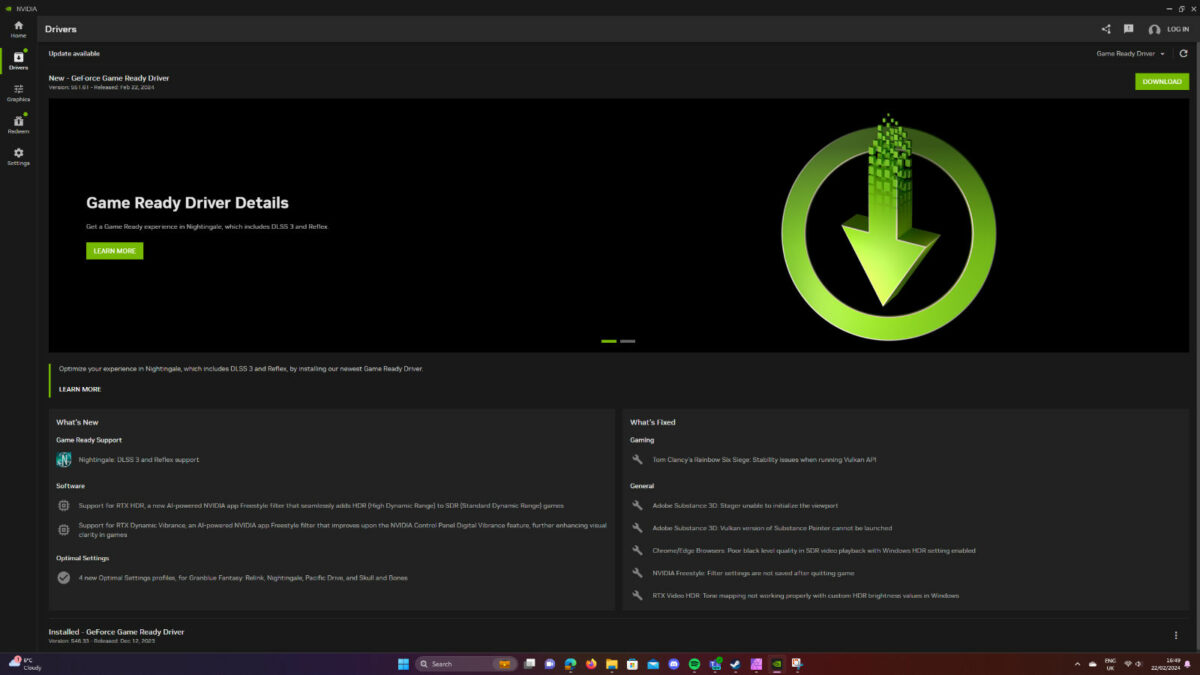
Drivers will look familiar to GeForce Experience users, as it hasn’t changed all that much. Nvidia has enhanced the information in its patch notes and made the Game Ready part more distinct.
Still, the idea is to encourage you to download the latest driver. It’s also convenient to reinstall your current driver using the hamburger menu in the bottom right. Why fix what’s not broken?
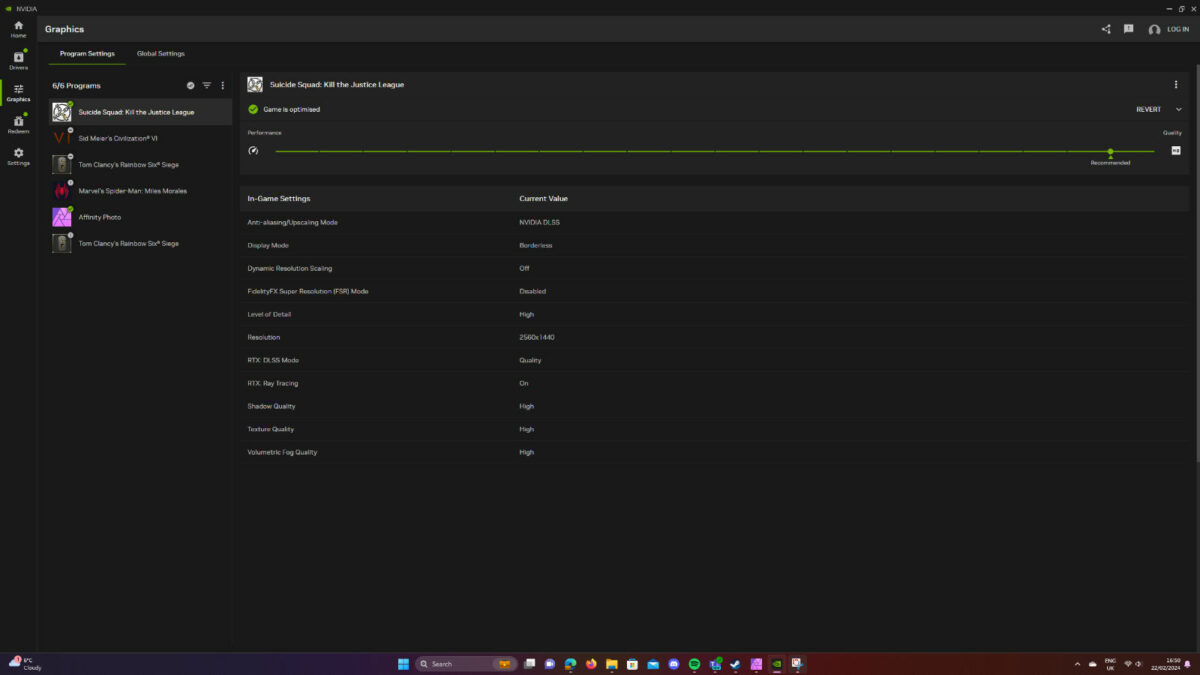
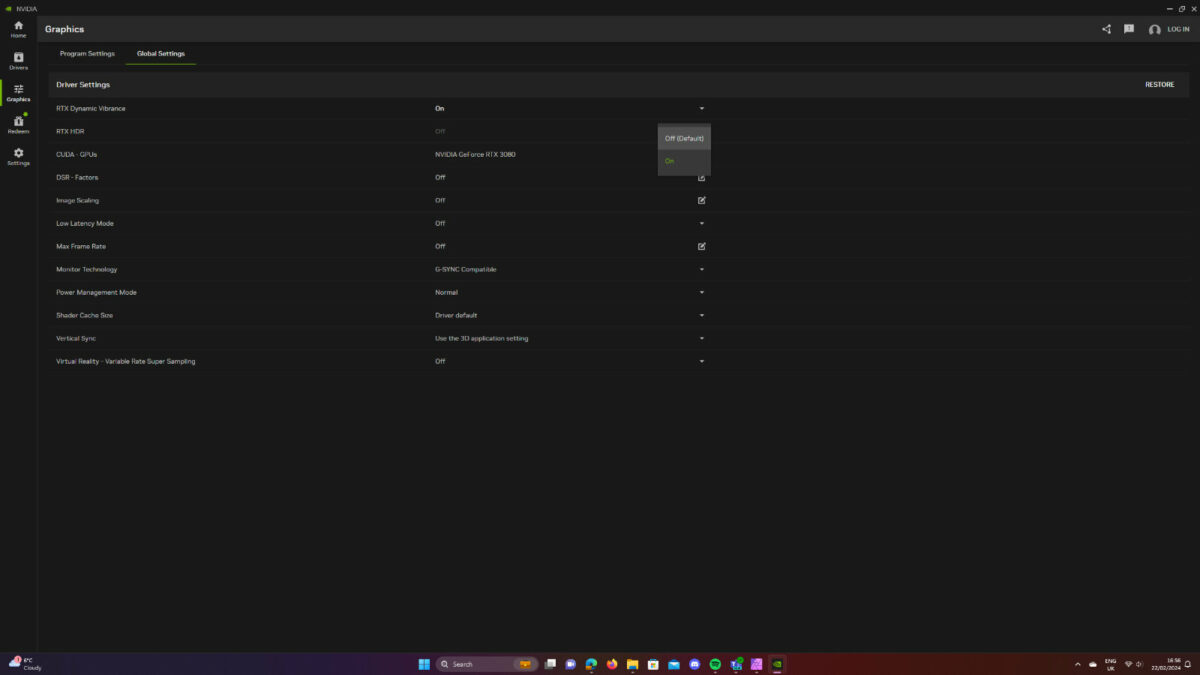
Graphics looks far more digestible than GeForce Experience’s game settings page. Clicking on the individual programs shows you the current values and Nvidia’s proposed optimisations. It won’t act until you accept them. Curiously, the app classes any unactioned games as unoptimised even if the proposed settings are identical. It is in Beta, though, so let’s cut it some slack.
There’s a second global settings tab nestled in Graphics that lets you set max frame rates, alter variable refresh rates, and more. The most interesting parts here are RTX Dynamic Vibrance and RTX HDR. Dynamic Vibrance adds an AI-powered filter that brightens the image without crushing the colour. RTX HDR enables high-dynamic range in games that are strictly standard dynamic range (SDR). That particularly could make an HDR monitor worth it, for a change.
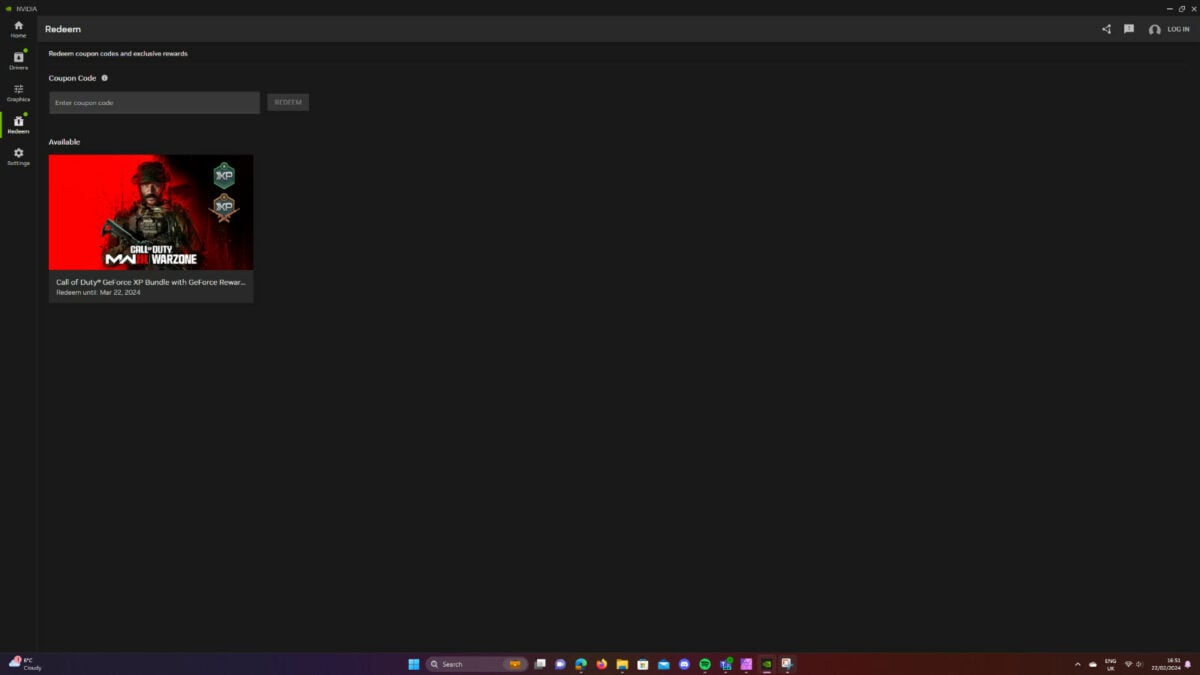
Redeem is the section where you can claim rewards. It’s the only part of Nvidia App that requires a login. If you don’t mind parting with your details, there’s currently a free one-hour Call of Duty: Warzone double XP boost and double weapon XP boost up for grabs.
Granted, it looks a little empty right now, but it’s early days. You might even see special offers for GeForce Now crop up every once in a while if you’re lucky. In fact, I highly recommend the service, so long as your broadband connection can keep up.
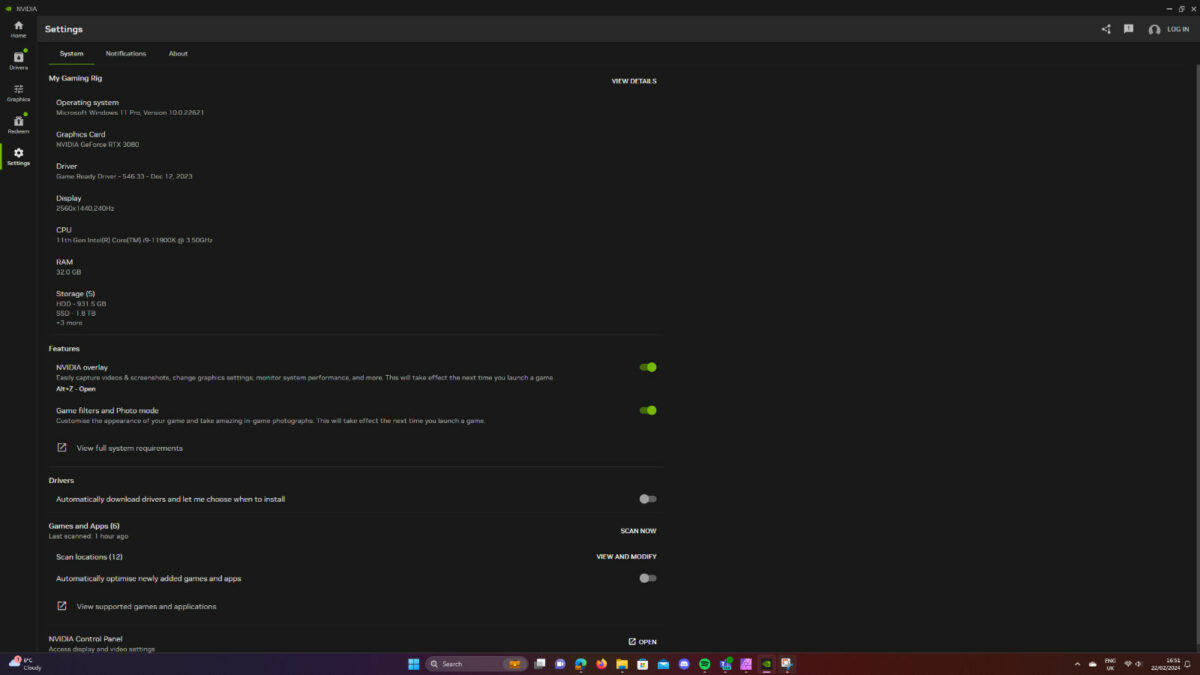
And finally, Settings does what it says on the tin. It grants you all your system information, lets you add or remove scan locations for your games, and enables automatic driver updates if you really want to. There’s even a shortcut to Nvidia Control Panel, which will eventually become part of the all-in-one App. The brand hasn’t yet said when that’ll happen, just that the switch will take some time with a gradual migration.
Some of us are purists here at Club386, keeping our machines stripped of all but the bare essentials. Others favour convenience, which is where Nvidia app comes in. All in all, I have a positive first impression. I no longer have to hand over my data to use the thing, and its bolstered feature set is pretty enticing. I’ll need to dig deeper to see if the optimisations actually net any fps improvements, but I’m at least cautiously optimistic.

